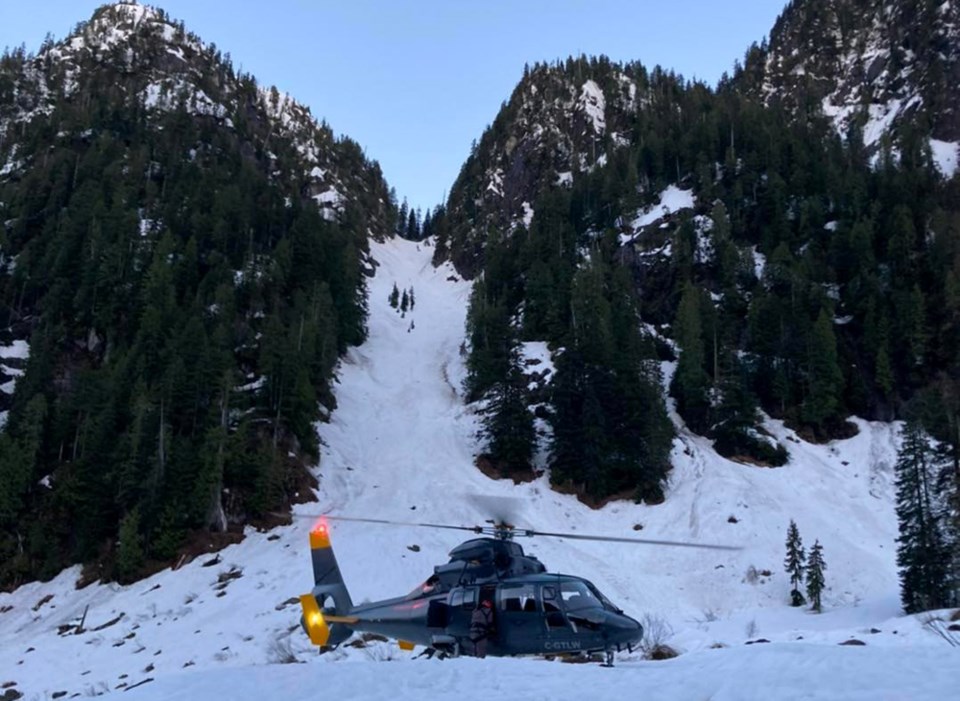This story has been amended since it was first posted.
North Shore Rescue volunteers plucked a wayward couple out of the Hanes Valley Saturday evening (April 30), a dangerous area that has claimed several hikers’ lives over the years.
Team leader Mike Danks said the North Vancouver friends, both 19, had gone for a hike in Lynn Headwaters Regional Park but got lost and continued north into the Hanes Valley, which is closed this time of year.
When the pair realized they were in trouble, they called 911, saying they were somewhere behind Grouse Mountain.
Getting cell reception in the Hanes Valley is nothing short of miraculous, Danks said.
“This is really weird,” he said. “I don't think we've had anyone that's been able to get reception in that area before, so they got very lucky.”
The search manager directed them to hike back to North Shore Rescue’s helipad and cache, which the team installed about 500 metres away for just such an occasion.
Because twilight was approaching, they opted to send in Talon's Dauphin helicopter, which is capable of night flight.
“Talon had a very quick response, which was huge for us,” Danks said. “A small team went in. They were able to land, escort them into the aircraft and get them out safely.”
Right now the area is covered in hard-packed snow, which can be extremely slippery, and one of the hikers was in running shoes. As the weather warms up, snow bridges will form, which are at high risk of collapse and likely to cause injury, Danks added.
The area is not far from where North Shore Rescue members recovered the body of Liang Jin, a hiker who died while attempting to cross Hanes Valley in the winter of 2015. It’s also where the team suspects hiker Carl Couture disappeared in October 2017.
Metro Vancouver keeps the trail officially closed until all the snow has melted.
“This definitely had the potential to be a recovery operation if it had gone any differently,” Danks said. “It's closed for a reason. … Until all the snow is melted out there and it's safe, that boulder field is a huge avalanche path.”
Danks said the team is looking into whether any of the major cell carriers may have added towers that might improve coverage in the area, “which would be fantastic,” he said. In the meantime, anyone going into the area should be carrying a satellite communication device to call for help, he added.
The team has been called out 40 times so far this year, which is down significantly from the team’s record-smashing 2021 pace. But Danks said, his members are bracing for things to get very busy again soon.
“Once we start seeing some nice, clear weather, we're going to see an influx of people getting out into the mountains,” he said. “I really do think it's going to ramp back up.”
The first version of this story stated the hikers were in their early 20s, not 19. It also indicated they were in running shoes when only one of them was in runners.



